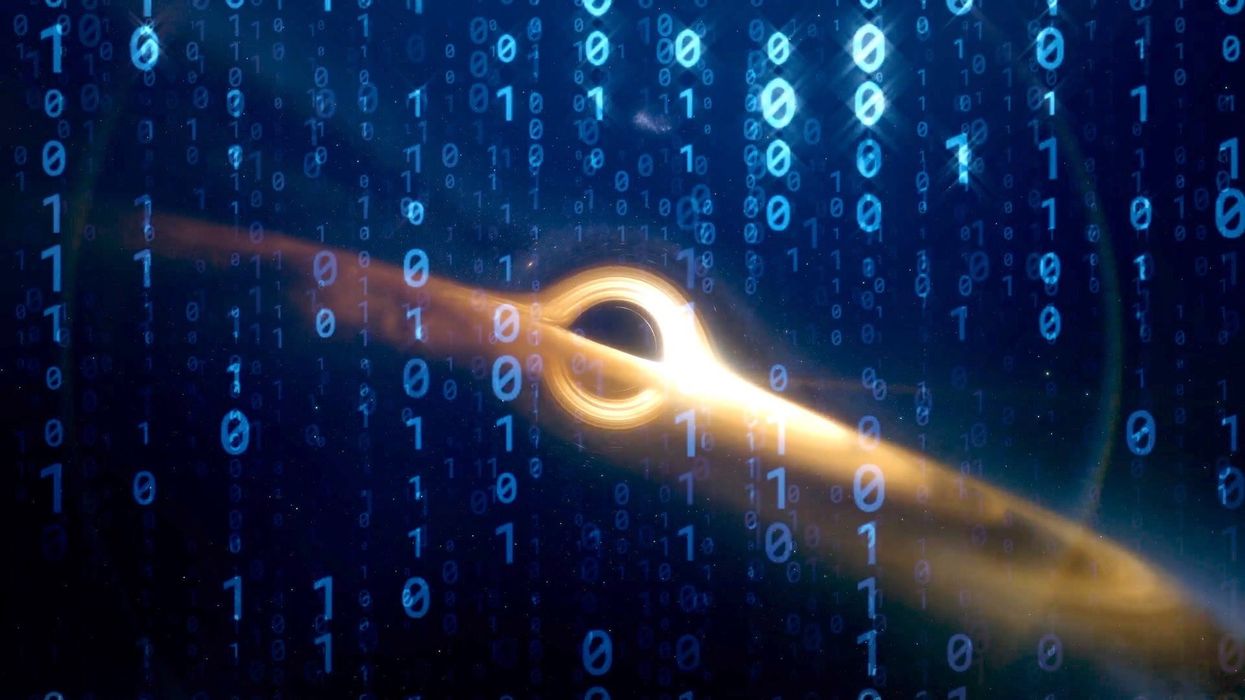Harriet Brewis
Jul 07, 2025
NASA simulation takes you into the heart of a black hole
ZMG - Amaze Lab / VideoElephant
Black holes are the behemoths of the universe, with not even light able to escape their clutches.
It’s no wonder, therefore, that science fiction has always been fascinated by the question: what would happen if you went through one?
Now, a NASA supercomputer has attempted to answer this by creating a jaw-dropping simulation.
"Simulating these difficult-to-imagine processes helps me connect the mathematics of relativity to actual consequences in the real universe," Jeremy Schnittman, an astrophysicist at NASA's Goddard Space Flight Center who created the immersive visualisation, said in a statement.
"So I simulated two different scenarios, one where a camera – a stand-in for a daring astronaut – just misses the event horizon and slingshots back out, and one where it crosses the boundary, sealing its fate."
For those who haven’t watched Sam Neil’s 1997 sci-fi horror film of the same name, “event horizon” refers to the black hole’s surface, and is the point at which nothing can escape.
And because light is the main tool we use to investigate the universe, if we can see no light from inside a black hole, we simply can’t know what’s there.

The one thing we do know, based on how light and matter move across black holes, is that the gravitational environment around the event horizon is extraordinary.
In some cases, anything that gets too close to this boundary gets pulverised into atoms by the extremity of the forces involved, as Science Alert notes.
The precise point at which this occurs depends on the type of black hole: stellar-mass black holes, which are spread throughout our galaxy, have a mass of three to dozens of times the Sun’s, while supermassive monsters – which lurk in the centres of most big galaxies, including our own –weigh 100,000 to billions of solar masses.
At any rate, as Schnittman puts it: “If you have the choice, you want to fall into a supermassive black hole.
"Stellar-mass black holes, which contain up to about 30 solar masses, possess much smaller event horizons and stronger tidal forces, which can rip apart approaching objects before they get to the horizon."
This occurs because the gravitational pull on the end of an object nearer the black hole is much stronger than that on the other end.
Any objects that start falling in stretch out like noodles, a process astrophysicists call spaghettification, as NASA notes.
To create his visualisations, Schnittman teamed up with fellow Goddard scientist Brian Powell and used the Discover supercomputer at the NASA Center for Climate Simulation.
The project generated about 10 terabytes of data – equivalent to roughly half of all the text content in the US Library of Congress – and took about five days running on just 0.3 per cent of Discover's 129,000 processors. The same feat would take more than 10 years on a typical laptop.
360 Video: NASA Simulation Plunges Into a Black Hole youtu.be
The simulated destination is a supermassive black hole with 4.3 million times the mass of our sun, equivalent to the monster located at the centre of our galaxy, the Milky Way.
Its event horizon spans around 16 million miles (25 million kilometres), or 17 per cent of the distance from Earth to the sun.
It is surrounded by a flat, swirling cloud of hot, glowing gas called an accretion disk, which serves as a visual reference during the fall.
The simulation also shows glowing structures called photon rings, which form closer to the black hole from light that has orbited it one or more times, as well as a backdrop of the starry sky as seen from Earth.
As the camera approaches the black hole, reaching speeds increasingly approaching that of light itself, the glow from the accretion disk and background stars becomes amplified, much like how the sound of an oncoming race car rises in pitch.
Their light appears brighter and whiter when looking into the direction of travel.
The visualisation begin with the camera located nearly 400 million miles (640 million kilometres) away, with the black hole quickly filling the view.
However, along the way, the black hole's disk, photon rings, and the night sky become increasingly distorted – eventually forming multiple images as their light traverses the increasingly warped space-time.
In real time, the camera takes about three hours to fall to the event horizon, executing almost two complete 30-minute orbits along the way.
But to anyone observing from afar, it would never quite get there.
As space-time becomes ever more distorted closer to the horizon, the image of the camera would slow and then seem to freeze just shy of it. This is why astronomers originally referred to black holes as "frozen stars."
At the event horizon, even space-time itself flows inward at the speed of light – the cosmic speed limit.
Once inside, both the camera and the space-time in which it's moving rush toward the black hole's centre – a one-dimensional point called a singularity, where the laws of physics as we know them cease to apply.
"Once the camera crosses the horizon, its destruction by spaghettification is just 12.8 seconds away," Schnittman said.
From there, it's only 79,500 miles (128,000 kilometres) to the singularity. This final leg of the voyage is over in the blink of an eye.
In the alternative scenario, the camera orbits close to the event horizon but it never crosses over and escapes to safety.
If an astronaut flew a spacecraft on this six-hour round trip while their colleagues on a mothership remained far from the black hole, they’d return 36 minutes younger than her colleagues.
This is because time passes more slowly near a strong gravitational source and when moving near the speed of light.
And yet, "this situation can be even more extreme," Schnittman admitted.
"If the black hole were rapidly rotating, like the one shown in the 2014 movie 'Interstellar,' she would return many years younger than her shipmates."
This article was originally published on 8 May 2024
Why not read...
Groundbreaking discovery changes our understanding of dinosaur timelines
This is why Earth's 'sister' planet lost all of its water
Sign up for our free Indy100 weekly newsletter
Have your say in our news democracy. Click the upvote icon at the top of the page to help raise this article through the indy100 rankings
Top 100
The Conversation (0)














